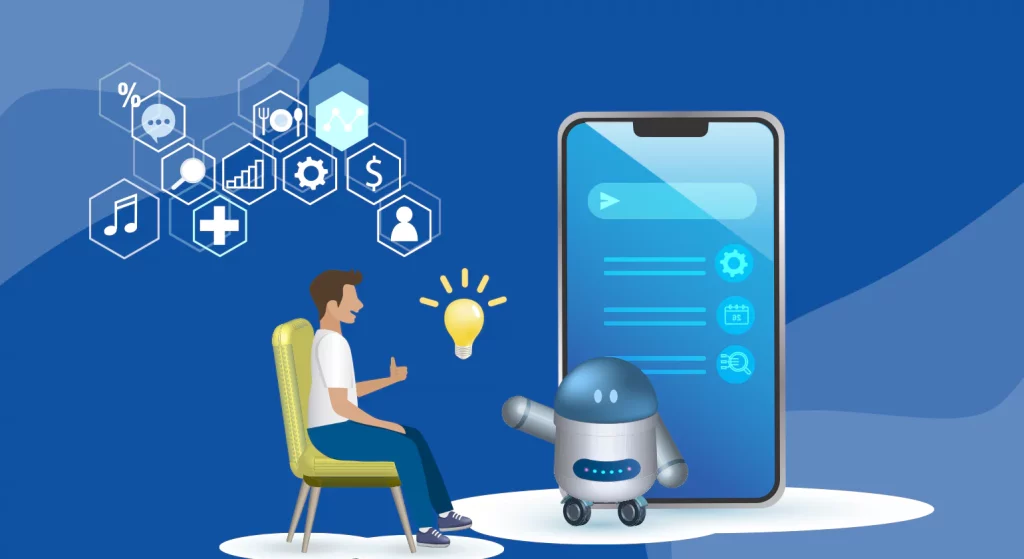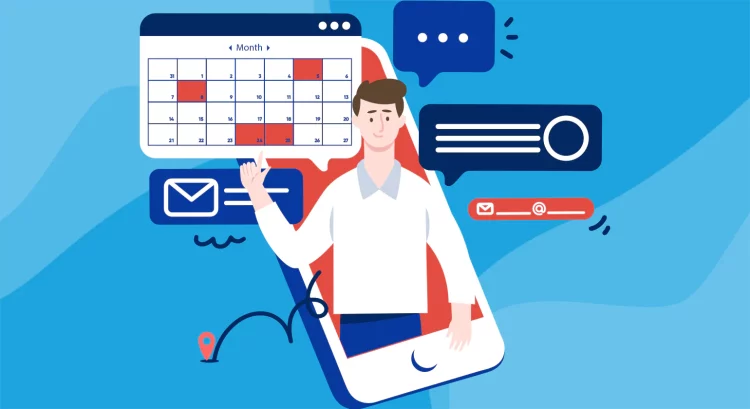Introduction:
In today’s fast-paced world, managing time efficiently is crucial for success, whether in professional or personal spheres. Traditional scheduling methods, including manually updating calendars or relying on basic reminders, are increasingly being replaced by intelligent scheduling software that leverages the power of artificial intelligence (AI). AI-powered scheduling tools have the ability to automate task organization, suggest optimal times, and avoid scheduling conflicts, all while boosting productivity and minimizing human error. This article explores the key features, benefits, challenges, and future potential of AI-driven scheduling systems.
1. The Need for Intelligent Scheduling in a Fast-Paced World
As businesses and individuals juggle numerous tasks and appointments every day, the complexity of time management has increased. People are now working across multiple devices and platforms, often with overlapping responsibilities and commitments. According to a report from McKinsey, employees spend around 28% of their workweek managing emails and schedules, suggesting the immense burden time management places on productivity.
Traditional scheduling methods—using paper planners, simple calendar apps, or email-based reminders—are becoming obsolete in the face of growing demands for efficiency. With constant distractions, tight deadlines, and unexpected changes, there’s a critical need for a smarter approach to scheduling.
2. How AI Transforms Scheduling
Artificial intelligence (AI) is revolutionizing the way we approach time management. At its core, AI can learn from past patterns, analyze data from calendars, tasks, and meetings, and make intelligent predictions and recommendations to optimize daily schedules.
Here are the main ways AI enhances scheduling:
- Automated Task Prioritization: AI tools can automatically analyze your upcoming tasks, meetings, and commitments to prioritize them based on deadlines, urgency, and the time you have available.
- Intelligent Time Slot Suggestions: Based on your previous habits, preferences, and productivity patterns, AI suggests the best times for meetings or focused work.
- Conflict Detection and Resolution: AI-powered software proactively detects conflicting events and suggests alternative timings, ensuring your schedule remains clutter-free and manageable.
- Smart Calendar Syncing: AI tools seamlessly sync with multiple calendars (work, personal, family) and integrate with apps such as Zoom, Microsoft Teams, and Slack, reducing scheduling friction and manual effort.
- Adaptive Learning: With each new interaction, AI learns and adapts to your preferences, improving its scheduling suggestions over time.
3. Key Features of AI Scheduling Software
AI scheduling software typically includes a wide array of advanced features that extend beyond traditional calendar apps. These features work together to streamline the scheduling process and provide users with optimal time management.
- Natural Language Processing (NLP): Modern AI scheduling software uses NLP to interpret and create appointments from simple phrases, such as “Schedule a meeting with John tomorrow at 2 PM.” The software can instantly translate this command into a fully structured event.
- Real-time Collaboration: AI scheduling software supports collaboration by automatically suggesting meeting times that suit all participants, taking into account their time zones and previous interactions.
- Virtual Assistants: Some AI scheduling platforms offer virtual assistants (e.g., Google Assistant, Siri) that can interact with your calendar, add appointments, send reminders, and even manage follow-ups on your behalf.
- Predictive Analytics: AI tools analyze your daily, weekly, and monthly patterns and provide insights into how you spend your time, allowing you to make informed decisions on future scheduling.
- Automated Rescheduling: If there is a cancellation or change, AI systems can reschedule meetings in real-time and notify all stakeholders, reducing the time spent on back-and-forth communication.

4. Benefits of AI-Powered Scheduling Software
The benefits of using AI for scheduling are profound, especially in terms of boosting productivity, saving time, and reducing human error.
a. Improved Efficiency and Productivity
One of the most significant benefits of AI scheduling is its ability to save time. AI automates many aspects of scheduling, such as finding available meeting times, resolving conflicts, and generating reminders. This reduces the administrative burden on users, allowing them to focus on more important tasks and decision-making.
b. Minimization of Scheduling Conflicts
AI-powered tools eliminate the headache of double-booking or missing important appointments. The software can check the availability of all parties involved, taking into consideration existing commitments, and suggest the best time for meetings or events.
c. Better Time Allocation
AI tools not only optimize your schedule but also allocate time for important activities such as breaks, exercise, or relaxation. By automating task allocation, users can avoid overloading themselves with back-to-back meetings and improve overall work-life balance.
d. Data-Driven Insights
AI algorithms provide insightful data regarding time utilization and productivity patterns, helping individuals and organizations identify areas for improvement. Whether it’s reducing time spent in meetings or increasing the amount of focused work, AI helps fine-tune daily workflows.
5. Challenges in Adopting AI Scheduling Tools
Despite the numerous advantages, there are challenges in adopting AI-driven scheduling tools:
- Learning Curve: Users may initially find it difficult to trust AI systems for managing their personal and professional schedules, especially when it comes to data privacy concerns.
- Integration Issues: AI scheduling software needs to be integrated seamlessly with existing calendar apps, communication tools, and CRM systems, which can be challenging in organizations that rely on multiple platforms.
- Dependence on Data: AI systems rely on historical data to make predictions. If a user has not used the software long enough or hasn’t provided sufficient data, the AI may not make accurate suggestions.
- Cost: While many AI scheduling tools offer free versions, premium features—such as advanced integration, virtual assistants, or customized analytics—can be expensive, making them less accessible for small businesses or individual users.
6. The Future of AI in Scheduling
The future of AI-powered scheduling software looks promising. As AI technologies continue to advance, the capabilities of scheduling software will evolve. Here are some potential future trends:
- Integration with Wearables: AI scheduling software may begin to integrate with wearables like smartwatches, automatically adjusting schedules based on health data, stress levels, or energy levels. For instance, if a user is feeling tired or stressed, the AI could suggest rescheduling non-essential tasks to a later time.
- Voice-Activated Scheduling: As voice recognition technology becomes more advanced, users may simply speak commands to their virtual assistant, allowing them to schedule meetings and appointments hands-free.
- Personalized Scheduling: Future AI tools will become even more personalized, learning not only from a user’s calendar but also from their work style, preferences, and behavioral patterns to provide highly tailored scheduling recommendations.
- Advanced AI Collaboration Tools: Beyond scheduling individual events, AI will facilitate collaborative planning for teams, predicting the best times for group meetings, setting deadlines for collaborative tasks, and even managing team-wide productivity levels.
7. Conclusion
AI-powered scheduling software represents a significant leap forward in personal and professional time management. By integrating AI into our calendars, we can maximize productivity, minimize scheduling conflicts, and make smarter decisions about how to allocate our time. While challenges remain in widespread adoption, the potential of AI scheduling tools to improve efficiency is undeniable. As these tools evolve, we can expect them to become more intuitive, integrated, and personalized, further transforming the way we manage our time.











































